History
The Tollense Valley in Germany is the site of one of the oldest known and largest battles in European prehistory. The site is located near the village of Weltzin in the state of Mecklenburg-Vorpommern (Germany).
The site was discovered in 1996. An amateur archaeologist found a humerus bone with a stone arrowhead in it in the Tollense Valley. The site was explored and provided for systematic archaeological research from 2007.
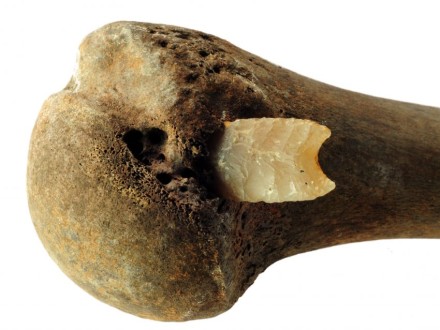
Battlefield
It turned out to be the site of a large-scale battle fought in the Late Bronze Age. By the end of 2022, the remains of some 140 people had been identified. Most of them were men between 20 and 40 years old. By March 2018, the number of human bone fragments had risen to around 13,000. The total number of dead is estimated at between 750 and over 1,000. The total number of combatants could have varied between 3,000 and over 5,000, assuming a mortality rate of 20-25%.
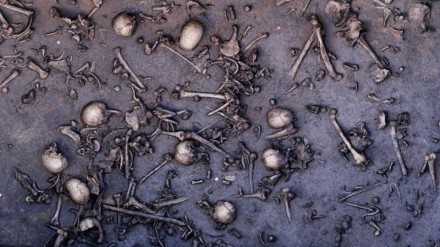
Various weapons and equipment have been found, including bronze swords, spearheads and arrows. These finds help archaeologists understand the technology and tactics of warfare at the time.
Context
The battle took place during a period of great social and political change. The late Bronze Age saw the rise of complex societies with hierarchical structures and extensive trade networks. The battle at Tollense may reflect conflicts over territory, power or resources.
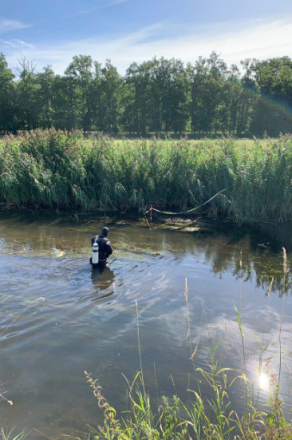
Late Bronze Age collapse
This unrest in the Late Bronze Age is not an isolated event. The phenomenon (collapse of the Late Bronze Age) led further in the eastern basin of the Mediterranean Sea to the violent fall of the great Bronze Age civilizations such as that of the Anatolian Hittites, the Mycenaean Greeks, the trading cities of Ugarit and the most famous of all Troy. In Egyptian sources this was attributed to the Sea Peoples.
Thus, the Tollense battlefield may be an echo of the Late Bronze Age collapse and the reason for this unrest must be sought in a supra regional (climatological) cause. As a result of which people became adrift and the struggle for the scarce available resources intensified.
Description
Research
Since 2007, the area has been systematically investigated. Divers from the local Association for Underwater Archaeology have carefully searched the bed and bank of the Tollense River and found more human remains.
Since 2022, the research has been led by the State Office for Culture and Monuments Mecklenburg-Vorpommern, in collaboration with Leiden University, Rostock University and Göttingen University.
Field School
Students from these universities are gathering knowledge during this collaboration, both above and below water, by digging at three locations (two on land, one underwater) and by collecting data on the various threats. This data will be used to draw up a strategy for conservation and research for the coming years.
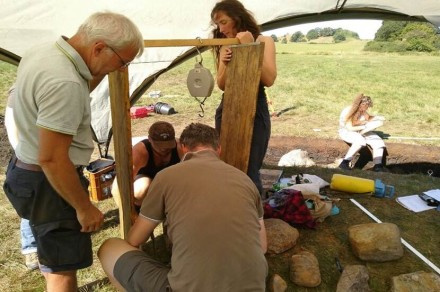
The RCE participates in the field school to support the capacity building of a younger generation of maritime archaeologists and to facilitate international knowledge exchange.
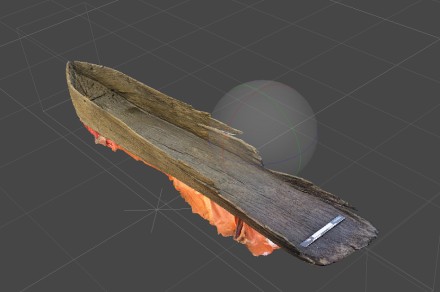
This is the first field school to be conducted within an ERASMUS collaboration between the universities of Rostock, Leiden and Göttingen. The aim is to further develop and strengthen a European collaboration focused on research into climate effects on archaeological sites.
The students from Leiden University were mainly engaged in research on a site in the river itself. Weblog field school
Status
References
- Andrew Curry.
Slaughter at the bridge: Uncovering a colossal Bronze Age battle. - tollense-river-warrior.
- RCE Weblog fieldschool.
- Jens Auer, Martijn Manders, Lorenz Rahmstorf, Thomas Terberger.
Arbeiten an den Fundplätzen Weltzin, MSE, Fpl. 21 und 32, und Kessin, MSE Fpl. 32 im Tollensetal.